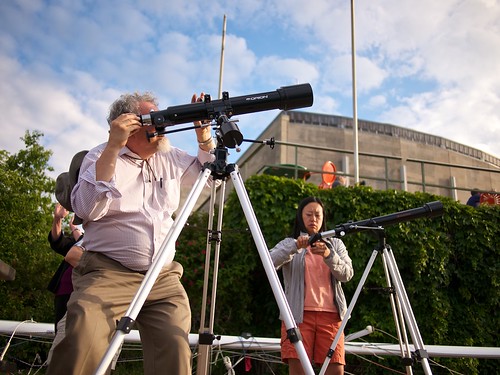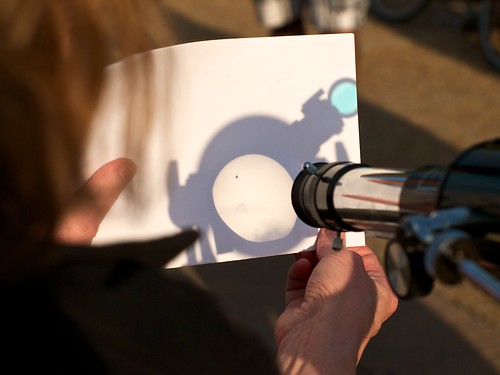Aside from being a rare astronomical phenomenon, the Transit of Venus is significant for historical reasons. By combining precise observations of the Transit from multiple sites around the Earth, astronomers in the 17th and 18th centuries hoped to use the principle of parallax to calculate the distance between Venus and the Earth. If this distance could be determined, then the distances of all the planets from the Sun could be calculated using Kepler's law relating the period of a planet's orbit to its distance from the sun [video]. That is to say, scientists would finally know the absolute size of the solar system.
Scientists and explorers from Europe and America mounted expeditions to the far corners of the world to observe the transits of 1761 and 1769. This included the famous first voyage of James Cook, who set out from England to sail around South America at Cape Horn before heading on to the island of Tahiti in the South Pacific. After 8 months at sea, Cook and the scientific observers reached Tahiti and established a small observation post. After successfully recording their data, Cook and his crew continued on to explore the coasts of New Zealand and Australia before gradually making their way through the Indies and around the Cape of Good Hope on their way back to England.
Here in Madison, Mike, Florence, and Robin set up two telescopes at the Memorial Union Terrace. However the weather was mostly cloudy as the transit began. A dinner of beer, bratwurst, and sauerkraut helped our intrepid scholars ward off scurvy while waiting for the clouds to part.

Finally, about an hour into the transit, we began to see gaps in the clouds and sunlight breaking through in the west. As the sun came into view Mike and Florence quickly re-calibrated the telescopes.

One telescope had a solar filter that allowed viewers to look directly at the Sun and Venus, while the second telescope projected the image of the transit onto a sheet of paper.


As the clouds came and went, we attracted crowds of interested passers-by. People were grateful to have a chance to view the transit, and we all had a blast!
Click here for a full slideshow of the event.
Great photos and commentary, Scott -- thanks for posting this!
ReplyDeleteAwesome post, Scott! I really should have stayed!
ReplyDeleteWow! Great post and great to hear the event went well. Sorry Ariana and I couldn't make it--we were buying a car and diapers. #parenthood
ReplyDeleteThanks for posting this Scott! I wish I could have been there
ReplyDeleteGreat post and nice photos, Scott! I wish I could have stayed longer!
ReplyDeleteThis comment has been removed by the author.
ReplyDelete